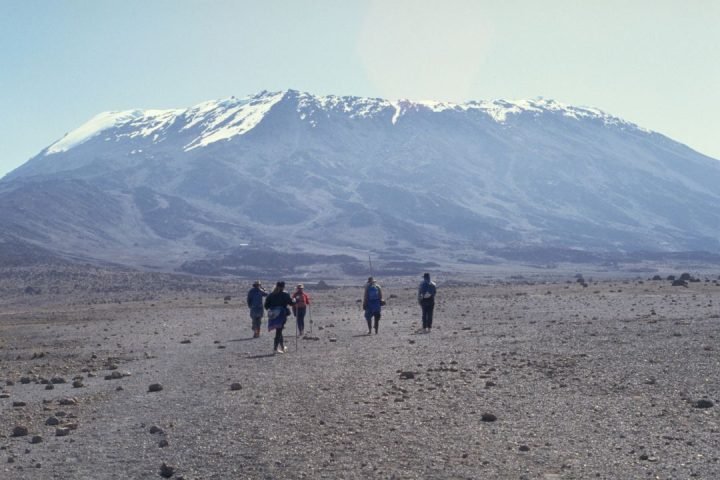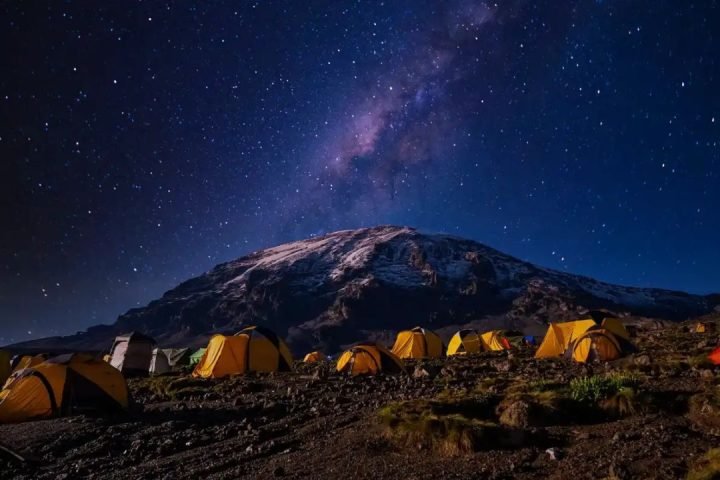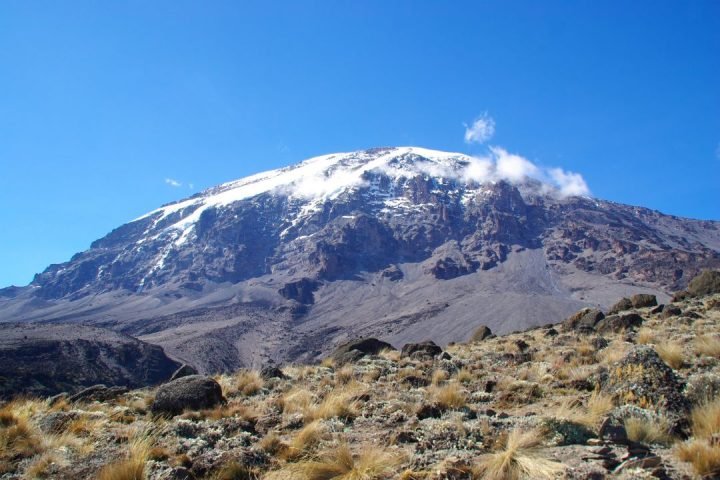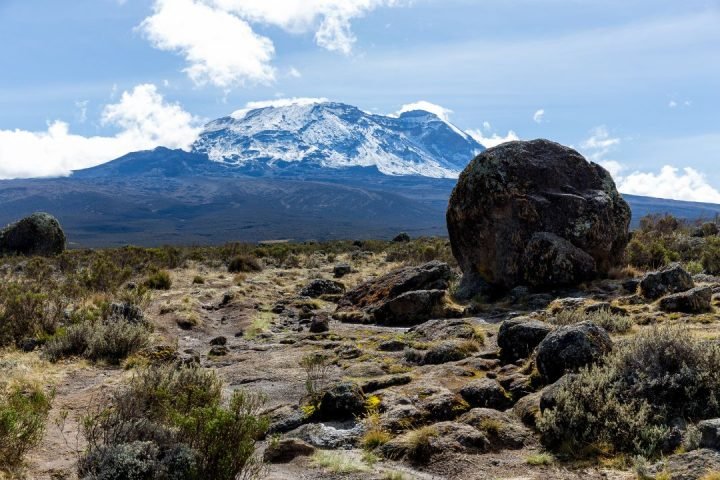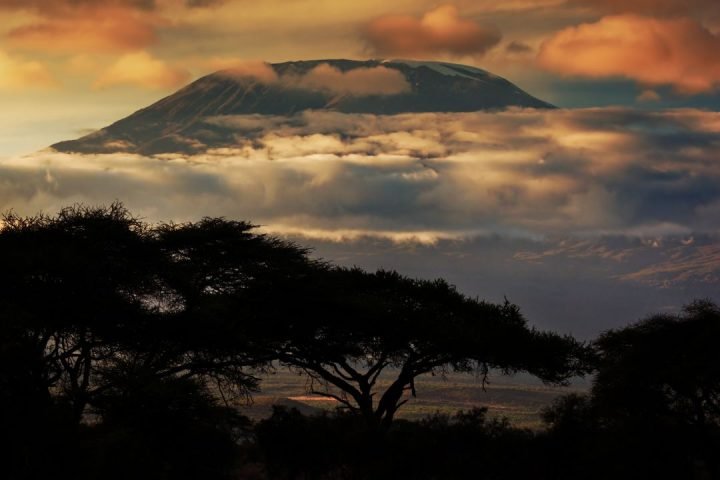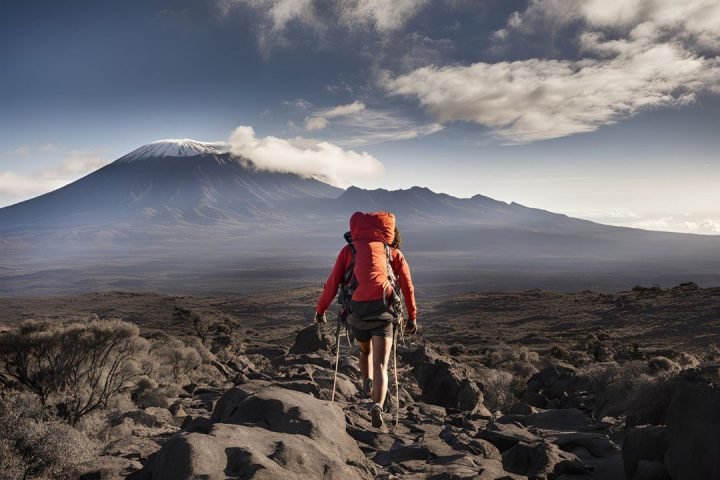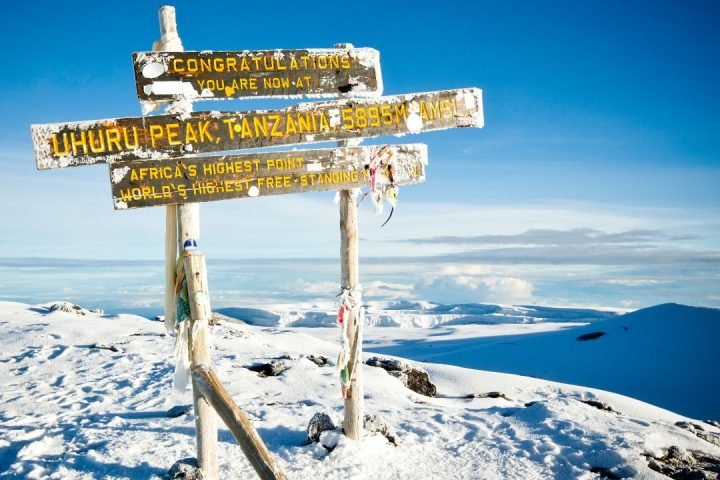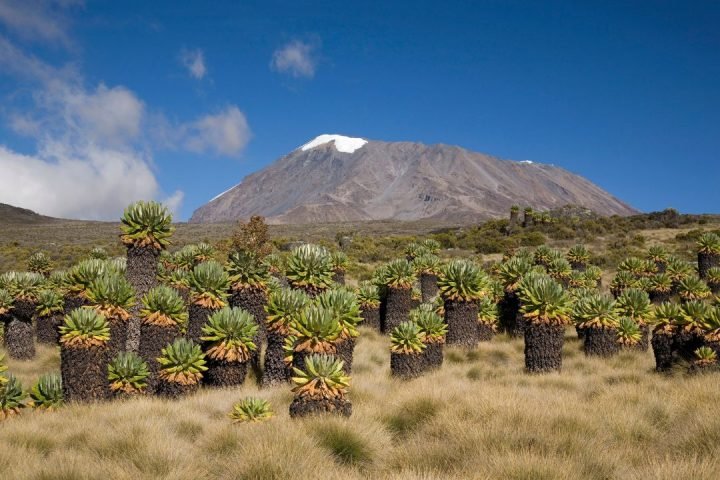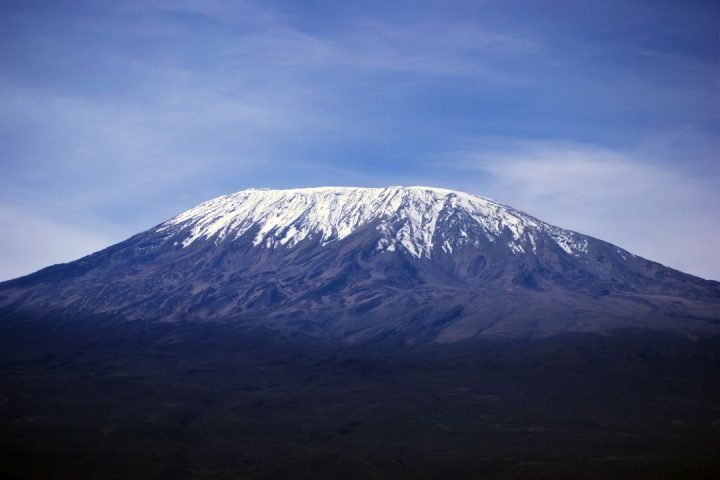7 Days Mount Kilimanjaro Trek – Machame Route Overview
The Machame Route, often called the “Whiskey Route,” is one of the most popular and scenic trails on Mount Kilimanjaro. Known for its stunning landscapes and diverse ecological zones, the route takes you through lush rainforest, moorlands, alpine desert, and finally to the icy summit of Uhuru Peak (5,895 m) — the highest point in Africa.
This 7-day trek allows for excellent acclimatization and showcases Kilimanjaro’s most breathtaking features, from the dramatic Barranco Wall to the sweeping views of Kibo and Mawenzi Peaks. With professional guides, skilled porters, and warm meals prepared daily, this adventure offers both challenge and reward — culminating in a sunrise above the clouds from the Roof of Africa.
📒 Please Note:
This trek begins and ends in Moshi, with transfers to and from Machame Gate included, personal gear, and accommodation before or after the climb are not included, but Leen Adventures can arrange these upon request.
7 Days Mount Kilimanjaro Trek – Machame Route Details
7 Days Machame Route Highlights
7 Days Mount Kilimanjaro Machame Route – Detailed Itinerary
Arrival Day
Upon arrival at Kilimanjaro International Airport (JRO), you’ll be welcomed by a Leen Adventures representative and transferred to your hotel in Moshi or Arusha. Spend the day relaxing, organizing your gear, and preparing for the upcoming adventure. In the evening, your guide will lead a detailed briefing and safety orientation for the climb.
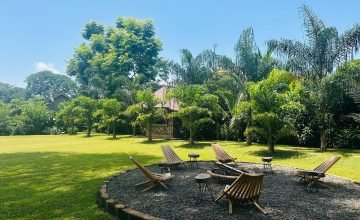


Day 1: Machame Gate (1,800 m) to Machame Camp (3,000 m)
Distance: 11 km | Hiking Time: 5–7 hours | Habitat: Rainforest
Today begins with a drive from Moshi to Machame Gate, where registration and preparations take place. The trek starts through dense rainforest filled with ancient trees, mosses, and rare plants. You may spot monkeys, tropical birds, and other forest wildlife as you gently ascend the trail. The path can be muddy and humid, but the lush scenery makes it captivating. As you gain altitude, the forest thins out before reaching Machame Camp by late afternoon.
Day 2: Machame Camp (3,000 m) to Shira Camp (3,840 m)
Distance: 5 km | Hiking Time: 4–6 hours | Habitat: Moorland
Leaving the forest behind, the trail climbs steeply up through heather and moorland. As you ascend, the views open up dramatically, revealing Shira Plateau and the majestic Kibo Peak. The vegetation becomes sparse, and the air cooler. You’ll reach Shira Camp, perched on the plateau, with stunning views across the plains below.
Day 3: Shira Camp (3,840 m) to Lava Tower (4,630 m) to Barranco Camp (3,900 m)
Distance: 10 km | Hiking Time: 6–7 hours | Habitat: Semi-Desert
Today’s route offers excellent acclimatization. After breakfast, trek toward Lava Tower, a striking volcanic formation where you’ll stop for lunch at 4,630 m. From there, descend to Barranco Camp, located in a sheltered valley below the Barranco Wall. This “climb high, sleep low” day helps your body adjust to the altitude and prepares you for the days ahead.
Day 4: Barranco Camp (3,900 m) to Karanga Camp (3,995 m)
Distance: 6 km | Hiking Time: 4–5 hours | Habitat: Alpine Desert
Begin the day with an exhilarating scramble up the famous Barranco Wall. Though steep, it’s non-technical and one of the most exciting sections of the trek. From the top, enjoy sweeping views of the Karanga Valley and Heim Glacier. The trail continues with gentle ascents and descents across ridges and streams before arriving at Karanga Camp, perfectly positioned for acclimatization before the base camp push.
Day 5: Karanga Camp (3,995 m) to Barafu Camp (4,673 m)
Distance: 4 km | Hiking Time: 3–4 hours | Habitat: Alpine Desert
The trail gradually climbs through a dry and rocky landscape toward Barafu Camp, your final base before the summit. As you approach, views of Mawenzi Peak and the upper slopes of Kibo dominate the horizon. After an early dinner, rest and prepare for the midnight summit attempt.
Day 6: Barafu Camp (4,673 m) – Uhuru Peak (5,895 m) – Mweka Camp (3,068 m)
Distance: 17 km | Hiking Time: 12–16 hours | Habitat: Arctic to Rainforest
The toughest and most rewarding day begins just after midnight. Climb steadily through the freezing darkness toward Stella Point (5,756 m), then continue to Uhuru Peak (5,895 m)—the highest point in Africa. Watch the sunrise from the top of Kilimanjaro, a memory to treasure forever. After photos and celebration, descend carefully back to Barafu Camp for a short rest, then continue down to Mweka Camp through alpine and forest zones. The lower altitude brings relief as you enjoy a warm meal and celebrate your achievement.
Day 7: Mweka Camp (3,068 m) to Mweka Gate (1,640 m) – Moshi/Arusha
Distance: 10 km | Hiking Time: 3–4 hours | Habitat: Rainforest
Descend through lush rainforest filled with bird calls and tropical vegetation until you reach Mweka Gate, where you’ll receive your summit certificate. Your driver will be waiting to transfer you back to Moshi or Arusha for a hot shower and well-deserved rest.



Departure Day
After breakfast, savor your final morning in Tanzania before being transferred to Kilimanjaro International Airport (JRO) for your flight home or onward journey. If you wish to extend your adventure, Leen Adventures can arrange an unforgettable safari or a relaxing Zanzibar beach getaway.
🎒 Optional Gear & Rentals
Enhance your Mount Meru trekking experience with these optional gear add-ons. All equipment is subject to availability, so early booking is recommended.
💰 Tipping Guidelines
Tipping is an important tradition on Mount Meru treks. Your mountain crew—including lead guides, assistant guides, cooks, and porters—work tirelessly to support you during the climb, and tips are a meaningful way to show appreciation for their dedication and effort.
Suggested Tipping Rates:
Tips are usually handed over at the farewell ceremony at the park gate on the last day of the trek. It is best to place tips in an envelope and give them to the lead guide, who will distribute fairly among the team.
Tips should be in US Dollars (clean, undamaged notes) or Tanzanian Shillings. While tipping is not mandatory, it is customary and greatly appreciated. For larger groups, tips are often shared equally among trekkers.
Are you Up for a Challenge?
